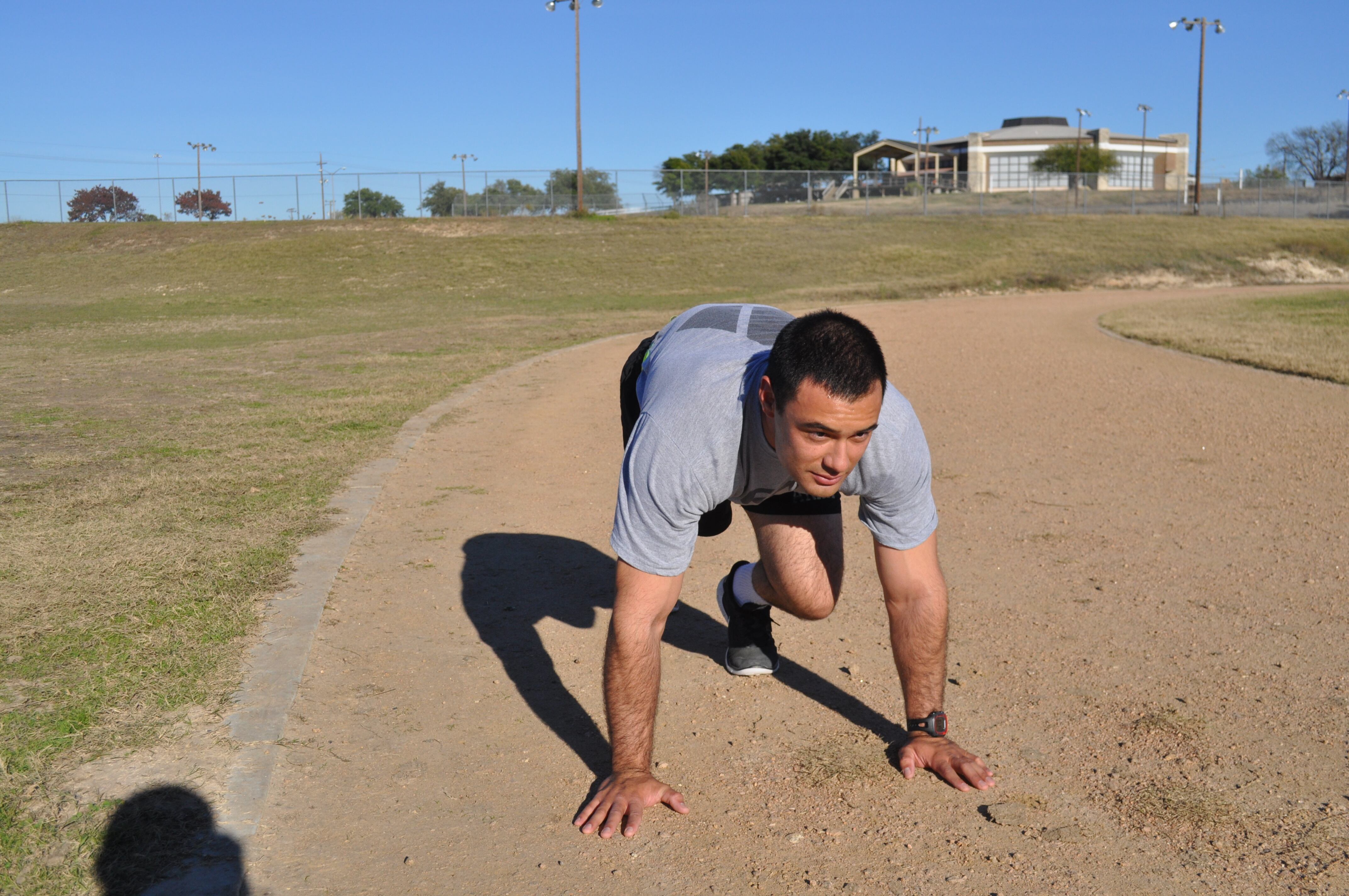Sgt. Joseph Sexton always enjoyed the atmosphere of Tough Mudders, 5Ks and similar events. But as someone with a powerlifting background, his focus was more on strength more than endurance.
"It's really fun to go out and do that kind of stuff, but when I joined the Army, my old platoon sergeant and platoon leader, all they did was run," said Sexton, who was a squad leader with Headquarters and Headquarters Company, 2nd Battalion, 12th Cavalry Regiment, 1st Armored Brigade Combat Team, 1st Cavalry Division, at Fort Hood, Texas.
Sexton, an indirect fire infantryman stationed in South Korea who celebrated his two-year anniversary in the Army on Feb. 11, said he felt like he was warming up around the 3-mile mark of an event.
"It got me thinking about how far I could go," he said.
He started looking for marathons, but "everybody else has done a marathon," so he found the longest race that was closest to Fort Hood. The Brazos Bend 100, a 100-mile trail race near Houston, caught Sexton's eye.
Training
Sexton's training schedule was a little unorthodox: He signed up for the December race around July, but after a month of getting ready, he went out to a field training exercise with the Army that lasted more than a month. He came back, trained more for the race, then went back out with the Army.
"If you're actually doing a solid training program, you start to see your results drop off in two days," he said. "Two weeks after that, you can really tell, and then you have to reset — each time I came back from the field, it was another reset."
Sexton said it was rough to not have a consistent training program, but he also counted on the backlog of conditioning he had as a soldier.
Training in addition to his regular Army duties proved challenging as well, Sexton said.
"It's really hard to fit in a 6- to 10-mile run at the end of a 12-hour workday," he said.
The race
Sexton had trained either on the road, on grass or on a treadmill — running on a trail proved to be a little different.
It was also raining the weekend of the race, creating a muddy, slippery trail.
"Around the 40-mile mark, I slipped and threw out my knee," he said. "I forced my way for another 10 miles, hit the 50-miler, and at that point didn't want to make it worse."
What's next
Sexton plans to train again for the 2016 Brazos Bend 100 race.
Being in South Korea will limit his activities, but he plans to run in any events he can in the upcoming months.
"It will be a much slower buildup," he said. "Instead of just going into running 5 miles then 6 miles then 7 miles and packing those all into one week, I want to run 1 mile for a while, 4 miles for a while."
Sexton, who also has experience as a personal trainer and wellness coach, has suggestions for hitting the ground running:

Sgt. Joseph Sexton trains for a 100-mile race.
Photo Credit: Spc. Anthony Holland/Army
Tips
1. No shortcuts or excuses.
"Endurance is about time. It does take a lot of effort, but there's no excuse for not practicing. I've heard it said before that a 12-minute mile is the same distance as a 6-minute mile."
2. Listen to your body.
"Don't push yourself further than you necessarily can go. Don't rush it. Have a nice, slow buildup, and be happy with the results. You don't have to compare what you're doing to anyone else. You don't want to push yourself too hard chasing someone else's dreams."
3. Make small changes in diet.
"With any kind of exercise program, hydration and nutrition are important. You're going to be running for 45 minutes a day, let's say. That's 23 hours and 15 minutes of the day for you to get out there and eat pizza and Taco Bell. You have to be careful what you put into your own body. You don't have to be like, 'Oh I'm going to dump out my cupboards.' If you're eating a sandwich at lunch, and you're eating white bread, change it to a seven-grain bread. You want to make small, healthy changes."
4. Maintain 'activities of daily living.'
"If nothing else, you want to be able to continue your ADLs. For a lot of elderly people, we're not looking for them to lift 135 pounds, but be able to lift a gallon of milk. You'll see massive increases in energy and motivation levels the healthier you get."
Charlsy Panzino covers veterans, entertainment, fitness and travel. Email her at cpanzino@militarytimes.com.
Charlsy is a Reporter and Engagement Manager for Military Times. Email her at cpanzino@militarytimes.com.




